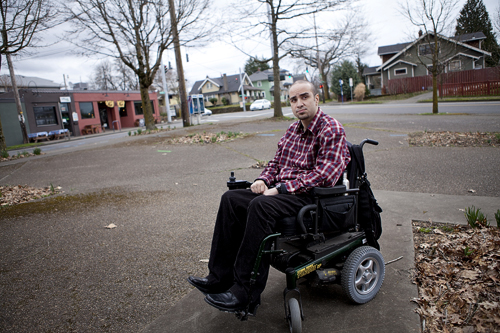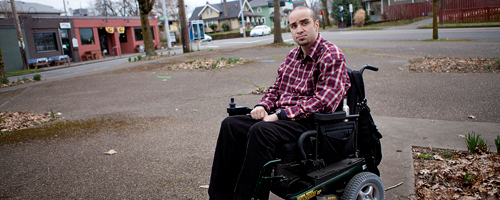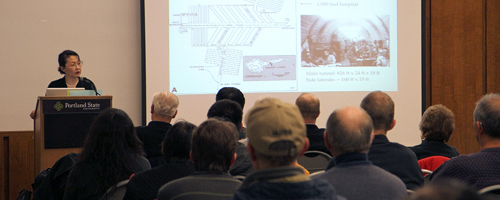The Sabin Triangle may be getting a makeover with a little help from some Portland State students. The neglected area, consisting of concrete, trees and grass located at Northeast Prescott Street and 15th Avenue, better known as the Sabin Triangle, is undergoing the first phases of what could be a major transformation.
Sabin Triangle up for possible redesign

The Sabin Triangle may be getting a makeover with a little help from some Portland State students.
The neglected area, consisting of concrete, trees and grass located at Northeast Prescott Street and 15th Avenue, better known as the Sabin Triangle, is undergoing the first phases of what could be a major transformation.
As part of their senior capstone, 10 PSU civil engineering students are aiding the Portland community and Architects Without Borders with the project.
The concept for the new park, said Eli Jefferson, who serves as the group’s project manager, is “an area to hold community meetings, yoga classes and plant spaces.”
“[It’s also] known as a pocket park,” added Kate Petak, a student involved in the project.
Petak explained that these parks are becoming increasingly common. “They are springing up everywhere, using small and once-idle pieces of land,” she said.
The Sabin Triangle used to be the last stop on a trolley line, but since then has been filled with concrete and poorly cared for.
A few years ago, after the community agreed on the need for a new use for the space, AWB came up with a conceptual idea for a park that would involve green features such as stormwater bioswales and planter boxes.
The design is expensive, which is where PSU students come into play, Jefferson explained.
“Our job is to do the initial surveying and figure out if this plan is feasible,” he said.
The 10 students are divided evenly into two groups that will survey different issues. The group headed by Jefferson will survey for ground elevation, groundwater elevation and the potential for contamination in the soil.
The second group, headed by PSU senior Alex Baumann, will locate sewer lines and make stormwater calculations, among other things.
The surveying will take place over several weekends in the spring.
“We are in the preliminary stages of design,” Jefferson said, adding that there are already obstacles predicted ahead.
“There was once an old gas station on the site,” Jefferson said. They are worried this could lead to major soil contamination.
Jefferson also fears that the sewer lines, which are 100 years old, may pose problems. Should the costs be too high, the project will be forced to end, he explained.
Students involved said working on a real community space provides them with valuable experience.
Jefferson said that being the project manager and being in charge of coordinating meetup times has taught him to properly manage other people’s time.
“I learned to do things early enough so we have time to make sure our work meets the right standard,” he said.
Jefferson and Baumann agreed this project has improved their communication skills.
“Being able to relate and talk to people who aren’t familiar with the terminology was a huge benefit,” Baumann said of trying to explain engineering concepts to nonengineers.
Petak said that her greatest takeaway was the whole reason she pursued civil engineering in the first place: “I got involved in engineering to help communities,” she said, noting that the project has increased her familiarity with the city’s many design laws and standards.
While the project will not be completed by the time the 10 students will finish their capstone class, they all said they hope to see the next group of civil engineering seniors take on the rest of the project in their own capstone class.





